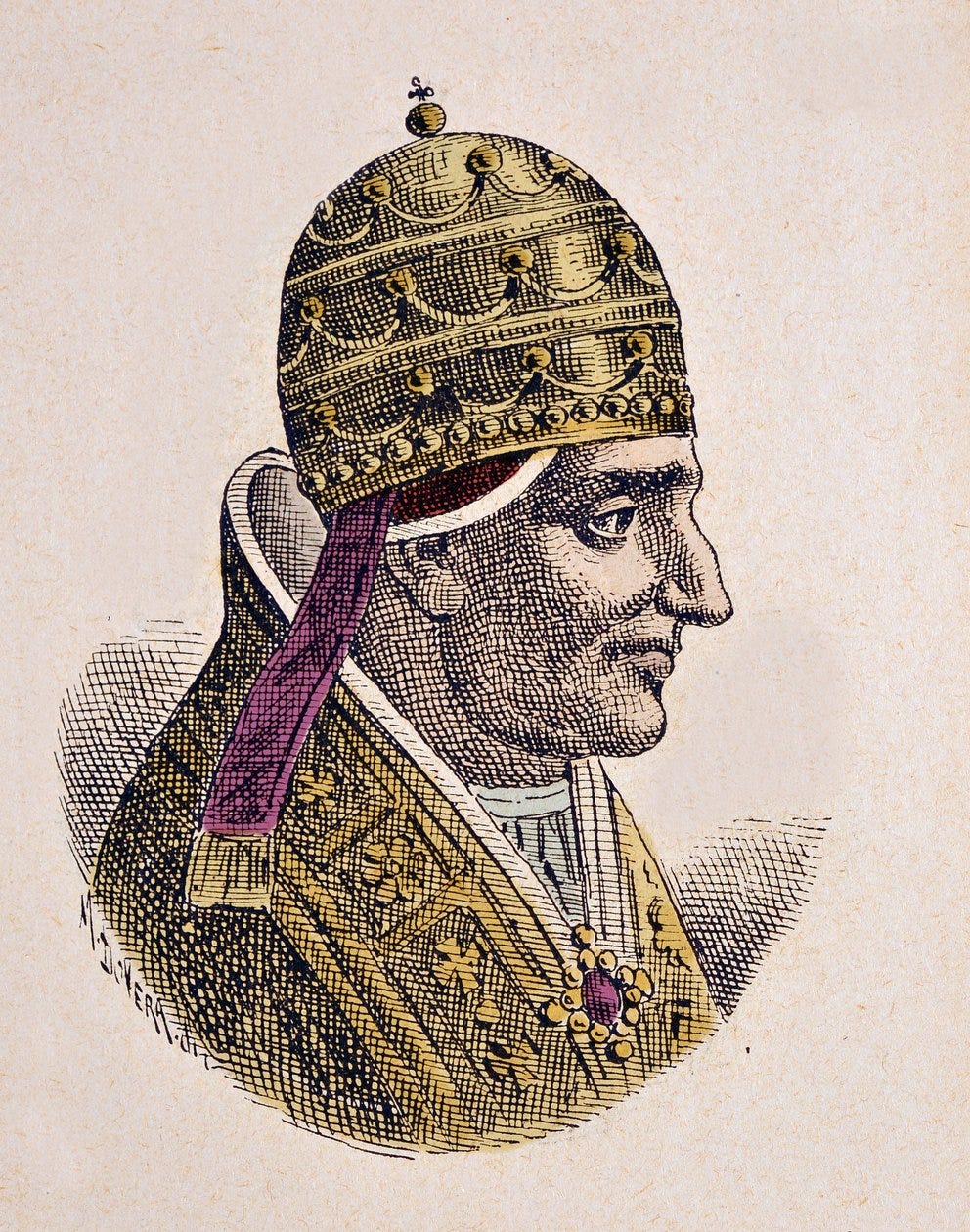Leo VII: The Monk Who Chose Peace
The Seventh of the Leos | Pope Leo VII (936–939 AD)
“To speak peace to them that are far off, and peace to them that are nigh.”
— Isaiah 57:19, Douay-Rheims
In the long twilight of the early Middle Ages, when kings came and went like shadows and the papacy swayed between silence and scandal, Leo VII emerged, not as a warrior or a reformer, but as a monk.
His was a papacy of moderation, prayer, and above all, mediation. He did not crown emperors. He did not battle heresies. But he kept the Church from splintering when the soil was dry and brittle, and that in itself was a work of grace.
A Monk on Peter’s Throne
Very little is known of Leo VII’s early life, but it is generally believed he was a Benedictine monk, possibly from the monastery of San Stefano on the Caelian Hill in Rome. Monastic virtue had shaped his soul: stability, silence, ora et labora.
He was elected pope in January of 936, following the death of Pope John XI. His election was heavily influenced, if not outright directed, by Alberic II of Spoleto, the secular ruler of Rome and son of the powerful Roman noblewoman Marozia.
The papacy was still, in many ways, under the thumb of Roman aristocracy. Yet Leo VII used the narrow space granted him not to scheme, but to heal.
A Pope of Reconciliation
The key feature of Leo VII’s pontificate was his effort to foster peace between warring powers, particularly between Hugh of Provence, King of Italy, and Alberic II.
At a time when the peninsula teetered on civil war, Leo played the role of spiritual diplomat. He invited the two leaders to Rome, not as a kingmaker, but as a father longing for concord among his sons. The talks bore fruit: a truce was brokered, Rome was spared further bloodshed, and the fragile order of central Italy endured a little longer.
This may seem unremarkable. But in an age where papal influence was thin and secular ambitions thick, Leo’s quiet peacemaking was a sign that the soul of the papacy still breathed.
Monastic Patronage and Moral Reform
True to his roots, Leo VII looked toward the monasteries as places of spiritual renewal. He supported monastic foundations and encouraged a return to Benedictine discipline.
He also granted authority to Frederick of Mainz, a reforming German archbishop, to expel Jews from certain areas where they were accused of influencing Christians against the faith. This act, while reflective of the medieval climate, must be viewed with sorrow today. It reminds us that even popes of good will can act within the limits of their time, shaped by pressures and prejudices beyond their sanctity.
Yet Leo’s heart was not driven by hatred but by a desire for purity in the Church, even if his execution was imperfect.
A Quiet Passing
Pope Leo VII died in July of 939, after only three and a half years in office. He was buried in St. Peter’s Basilica, without fanfare, without scandal. His legacy is simple: he kept the peace. In a century where many pontiffs were deposed, imprisoned, or martyred by political violence, Leo VII died in his bed.
Sometimes the lion watches, not from the mountaintop, but from the cloister.
“Blessed are the peacemakers: for they shall be called the children of God.”
— Matthew 5:9, Douay-Rheims
Peace is not the absence of conflict; it is the quiet work of reconciliation in a world addicted to noise. Leo VII was such a peacemaker.
The Monk Who Carried the Keys
In our day, we often measure greatness by visibility, by action, by bold statements, by conflict. But the Church has always known another kind of greatness: the quiet fidelity of those who till the soil when no one else notices. Who pray, govern, and reconcile not to be remembered, but simply to serve.
Pope Leo VII never thundered across Europe. But he stood in the breach, as Ezekiel once did, and pleaded for peace. He guarded the dignity of the Church by the same Benedictine silence that once preserved the flame of civilization itself.
And in doing so, he proved that the lion of Judah sometimes lies down, not in defeat, but in peaceful strength.


